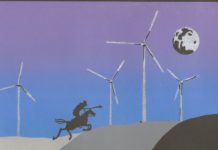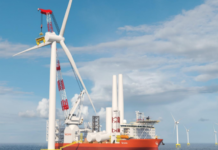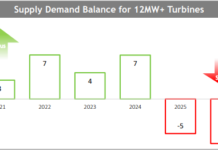Net metering describes the requirement that an electric utility buy electricity from any of its customers that generate their own electricity (usually with some sort of renewable energy, such as solar or wind) at the same price that they sell it to the customer. That seems fair, doesn’t it?
The Utility Perspective
It doesn’t seem fair to the utility. Utilities do more than just generate and sell electricity to customers. They also are responsible for transmission (delivering the electricity) and reliability (making sure that the lights work when you flip the switch.)
Taking just the reliability requirement, suppose that a homeowner, call him Sol, wants to install a solar photovoltaic (PV) system on his roof and sell the electricity back to the grid when he was not using it himself. But suppose Sol had a reliability requirement. For instance, suppose that whenever Ted, one of his neighbors, turned on the TV, Sol had to make sure the PV system was working, or the TV would not turn on. Also suppose Ted knows where Sol lives, and that Ted likes to watch TV at night.
Ted would probably grow quite unhappy with Sol quite rapidly, and would definitely complain, and might even start pay Sol an unfriendly visit at uncomfortable hours. Sol would probably think twice about signing up for net metering under those rules.
Utilities aren’t enthusiastic about net metering, either.
The Benefits of Grid-Tied Solar
The example above is something of a straw man. Unlike Sol in my example, with net metering, utilities are not being asked to do something which they are incapable of doing. In fact, utilities balance load and demand all the time, and so long as net metered systems only account for a small fraction of a utility’s total demand, they are un likely to be a strain on the grid.
In fact, because PV panels usually produce power on hot, sunny afternoons when peak load is driven by air conditioning, solar homes often provide a net benefit to the grid [.pdf] for which the customers are not paid, because most utility customers are charged a flat rate per kWh, which does not take into account the higher value of electricity at times of peak demand.
 |
| Peak reduction from near Zero Energy Homes with West-facing PV (blue) for Sacramento Municipal Utility District. Slide 19 |
The ideal orientation for PV depends on the utility’s load profile. West-facing PV will be better for some, while south facing will be better for others.
What about Small Wind?
Not all distributed generation is south- or west-facing PV, however, and other forms of generation such as small wind often produce power at times unrelated to peak. If the distributed generation customer is charged a flat rate for electricity, the costs of servicing the customer may come to exceed what he pays for service. This is especially likely for a customer with a small wind turbine which may produce very little of its power at high priced peak load times, and a lot at times of low load. This requires the utility to transmit the power a long distance to where it may be needed, as well as run its least expensive generation at less than full capacity in order to accommodate the extra power generated by distributed wind.
Many environmentalists will read "least expensive generation" in the line above and think "that’s exactly what we want… least expensive generation means coal plants, and it would be wonderful if a utility had to shut those down."
While coal is the least expensive form of generation for most utilities today, but it may not be for long, and not only because of the cost of pricing un carbon emissions. In terms of marginal cost of generation (the cost of producing an extra kWh of power) wind is already cheaper than coal because there is no fuel cost. I no longer recall where I heard this anecdote, but I believe that last winter (2005-6), on an extremely windy weekend in Europe, electricity was trading for free on the wholesale market, and many utilities were shutting their coal plants down. North America still lags Europe in terms of wind penetration, yet utilities in windy areas are likely to get to high wind penetrations first, and these are precisely the areas to which small wind is also most suited. In the not so distant future, I can easily see a scenario where a rural utility with a high degree of wind generation of its own might have to shut down some of its wind turbines in the middle of a windy night because of net-metered small wind, forcing the utility to pay retail rates for electricity it would otherwise have gotten for free, and then having to pay to transmit that power somewhere it might actually be used.
The Bigger Picture
This is not to say that small wind is bad and west-facing PV is good, just that each impose different costs or benefits on the system as a whole. Wind can also be good for a system. In February of 2006, an unseasonable cold snap caused power outages in Denver in part due to unexpectedly large demand for natural gas for heating. Cold winter nights also happen to be when the wind blows hardest and most consistently on the northeastern Colorado plains, so a small wind turbine on net metering would have actually helped to reduce the severity of the controlled rolling blackouts Xcel ordered. If the 400 MW Peetz wind farm (now in phase II of construction) had been operational in February 2006, I think it is unlikely that the blackout would have happened at all.
 |
| Graph from Trans-Elect, LLC using data from NREL Wind Performance Projections. Note that the capacity factor for Peetz in NE Colorado is over 60% in the month of February, when the blackouts occurred, and capacity factor is also highest at night. The other lines are wind regimes from SE Wyoming and Lamar in SE Colorado. |
Having Customers Pay for Costs and Benefits
Net metering is an implicit subsidy for distributed generation, because the net metered customer gains the benefits of the utility’s grid (reliability and transmission of electricity) without having to pay for it. In addition, some forms of net metered generation are given greater benefits than others when electricity is metered at a flat rate. If the price of electricity varied depending upon the load on the system (Time of Use pricing), then properly oriented PV would often be paid more than it under a flat rate system, and people would be encouraged to orient their solar panels for maximum system benefit, rather than maximum electrical output.
As for the implicit subsidy of unpaid-for transmission, I believe it should be abolished, and replaced by an explicit subsidy large enough to reflect the socia
l benefits of distributed generation other than increased grid stability, which is accounted for with time of use pricing.
California Solar Initiative: A Note of Caution
When California mandated that solar customers had to sign up for time of use metering in order to earn solar rebates, solar installers felt that they were not given enough support to understand the new rules (which included a lot more than the switch to TOU.) Non-specialist customer confusion was understandably greater, and TOU pricing became the focus of a minority of solar customers who were actually charged more than they would have been under flat rates (because their solar system too small to offset enough of their air-conditioning driven usage during the peak period). The California Public Utilities Commission (CPUC) removed the TOU pricing requirement because of the outcry.
The fact that the CPUC backed down is a tragedy. In a very real sense, the solar customers who were hurt by the switch to the TOU tariff were the ones who had been receiving an unfair subsidy in the flat-rate system: they used a disproportionate amount of power during peak times, so much so that the benefits of solar systems were too small to replace the lost implicit subsidy. Customers who suddenly had to pay something closer to the true cost of their electricity usage found that they were paying more than they had been, despite their new solar panels. They unsurprisingly clamored to get back onto the flat rate where they were able to take advantage of the market inefficiencies which subsidize their air-conditioning chilled lifestyles.
Such homeowners would do a lot more for the environment if, instead of splashing out money on a PV system, they had made their homes tighter and switched to more efficient air conditioning. For instance, the hyper-efficient Coolerado Cooler (The commercial version of which is sold as the Delphi HMX) works best in the hot, dry climates which were worst hurt by the time of use rates. As I have said many times, PV holds an unhealthy fascination for people, to the point that money which would do far more good spend on energy efficiency improvements is effectively wasted on solar. If we are truly more interested in solving the world’s climate problems, we will spend limited government rebate money subsidizing energy efficiency improvements with large net benefit for the grid that also reduce carbon emissions, rather than subsidizing expensive solar systems for a fraction of the benefit.
Conclusions
Net metering is definitely advancing. On August 21, I attended a Colorado Public Utilities Commission (PUC) hearing on distributed generation, and it seemed clear to me that some form of statewide net metering would likely become law in the Colorado in the next legislative session. See my notes from that meeting for more detail. I did bring up the possibility of combining net metering with TOU pricing in the meeting. However, that and other good ideas from participants (including inverted tiered block pricing) or using solar rebates to subsidized increased energy efficiency will probably require considerably more advocacy if they are to make it into law.
On the bright side, the Colorado Governor’s Energy Office did suggest that the PUC investigate west-facing PV as part of a net metering program. They are likely to be listened to, although inclusion in the final package from the state legislature is chancier.
The California experience shows that the complexity of such schemes means that care will have to be taken with design, and educational outreach is important. If the California consumers were helped with efficiency improvements before they installed solar, there would likely have been much less of a backlash, and the efficiency improvements would have done a lot more good than the solar PV systems which would have served as the carrot to induce the efficiency improvements.
DISCLAIMER: The information and trades provided here are for informational purposes only and are not a solicitation to buy or sell any of these securities. Investing involves substantial risk and you should evaluate your own risk levels before you make any investment. Past results are not an indication of future performance. Please take the time to read the full disclaimer here.









I want to bring out some subtleties in regard to the issue of whether wind turbines produce better at night or during the day. I’m a cross-country oriented glider pilot, so have done a lot of study of meteorology, particularly with regard to wind. (If you’d like to learn more about weather, I highly recommend “Understanding The Sky” by Dennis Pagen: ISBN 0-936310-10-3. Disclosure: I’m not Denis and don’t know him).
There is only one actual source of wind: temperature differences at different places on the earth’s surface, produced primarily by solar heating. Air flows, and thus wind blows, from high-pressure (warmer) areas to lower-pressure (cooler) areas. This generates all wind phenomena, from the smallest wisp of a breeze to hurricanes and typhoons.
Routine regional weather phenomena, such as high-pressure and low-pressure areas that persist for a week or more, are generated by the interplay of tropical heating, polar cooling, and Coriolis Effect. These follow predictable patterns at a continuum of time scales: from climate through seasons through “heat waves” and “cold snaps”. Integrating all these, the larger-scale air movements average out to the “prevailing winds” that are crucial to reliable large-scale power generation.
However, superimposed on the longer-term, regional air flows are shorter term, local ones, generated by the interplay between surface features and the daily solar heating cycle. At any given moment and location these may be enhancing, reducing, or even reversing the larger-scale air motions.
Objects on the earth’s surface such as trees, buildings, and hills act to disrupt air movement near the surface. Disruption at the surface slows the air just above it, which slows the air above that, etc., creating on average a vertical velocity gradient. Likewise, surface qualities tend to concentrate or disburse solar heating, resulting in local temperature differences. These can be drastic depending on sun angle, clouds, and air flows.
When certain effects such as large geographical features or large temperature differences cause sharp wind gradients (also called “wind shear”) they can propagate thousands of feet from their source. Absence of such disruption is the reason off-shore locations are better for turbines than nearby locations on land. Likewise, they are the reason turbines must be well separated from each other.
One particularly important local phenomena are thermals, which are vertical winds ascending from unusually hot areas on the surface. These routinely involve thousands of tons of air, reach thousands of feet in height, and have flow rates from a few mph to 15 or more. They disrupt upper-level air flow, sometimes deflecting faster-flowing upper air toward the surface, producing what surface dwellers perceive as gusts. In the process, they raise the average wind speed perceived at the surface, thereby tending to increase the productivity of local turbines. Under certain conditions of temperature gradient and humidity, thermals grow into local rain showers, and can grow further into thunderstorms, generating powerful surface air flows, and even multi-cell thunderstorms – which can give birth to micro-bursts and tornadoes, which produce more surface air flow than anyone wants!
On the other hand, nighttime cooling usually creates a blanket of stable (meaning cooler and thus heavier than that above it) air a few hundred feet thick at the surface which insulates the surface from upper-air movements. This is why it’s a common occurrence to go out two hours past dark after a partly-cloudy, gusty day and see the last few clouds moving smartly downwind (carried by the upper-level wind) yet feel at most a slight breeze.
Now, the total amount of wind energy that a surface-mounted turbine can capture over a long period of time is a function primarily of its ability to tap into prevailing winds that are available at its location. Large wind farms are located at places that have demonstrated an excellent wind resource, generally high spots often exposed to upper-level winds. The turbines are mounted on tall towers to amplify this (although see Paul Gipe’s fascinating article referenced below). Depending on specific interactions between the prevailing wind and local geography, productivity at such sites may be usually enhanced, or usually degraded, by daytime wind phenomena, with the latter being more likely due to their variety and less predictable nature.
However, the common “put a turbine on your farm” or “put a turbine where you need the power” situations are different. Most conveniently inhabitable sites are not routinely exposed to upper-level winds. A larger part of the wind resource at such a location will be generated by shorter term phenomena such as frontal passage and daytime differential heating.
Back in ’99 Paul Gipe wrote an excellent discussion of relevant effects: elevation, shear, and daytime vs. nocturnal, at
http://www.wind-works.org/articles/MWPerfProj.html
which goes into some detail regarding example ridges in Minnesota and California. In particular, it touches on a classic mistake made by an unsophisticated belief that “higher is always better”, which resulted in a turbine being mounted so high that at the top of its sweep the blade encountered winds in the opposite direction from those lower down – a more common situation on ridges than you might think – resulting in quick failure of the turbine.
So the bottom line is that randomly chosen spots in lower-elevation locations – such as small turbines put up by optimistic farmers – may tend to produce better during the day. Carefully sited wind farms may produce noticeably better at night because local daytime wind phenomena destabilize their powerful but delicately focused wind resource.
One last note: the capacity factor graph from Trans-Elect LCC that you displayed in this article implies that it is theoretically possible to choose a specific location to match diurnal demand with diurnal productivity. At the expense of instrumenting the candidate sites for a year with dozens of wind recorders at multiple elevations, this could greatly increase the ultimate productivity of the site, and possibly improve turbine lifetimes as well.
it is theoretically possible to choose a specific location to match diurnal demand with diurnal productivity.
This is certainly the holy grail: matching supply to demand. But we have a lot more tooks in our clean energy toolbox than just siting wind properly (which naturally will require transmission) we can also combine wind with solar, to provide more daytime power, and use various strategies like real-time pricing and demand response to shift the shape of the demand curve to the shape of the supply curve.
Beyond that, there remains the role of large scale energy storage (pumped hydro, CAES, flow batteries, thermal storage with CSP, V2g, etc) to make up any remaining difference.